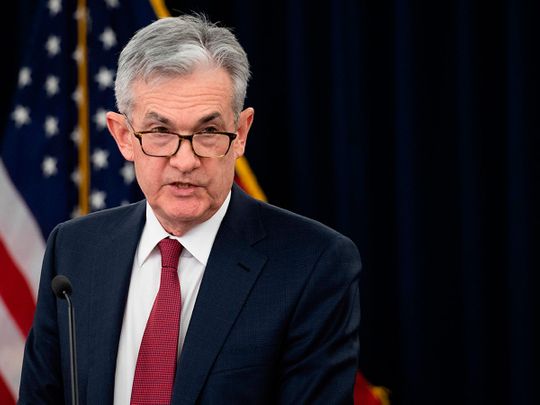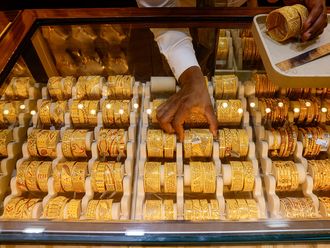
New York: US Treasury yields eased for a second consecutive day and the dollar rose on Wednesday after Federal Reserve Chairman Jerome Powell said there is a risk the US central bank’s interest rate hikes will slow the economy too much, but the bigger risk is persistent inflation.
The S&P 500 ended slightly lower, and looked set to put in the worst first-half for the US benchmark index in more than five decades.
“The clock is kind of running on how long will you remain in a low-inflation regime. ... The risk is that because of the multiplicity of shocks you start to transition into a higher inflation regime and our job is to literally prevent that from happening and we will prevent that from happening,” Powell said at a European Central Bank conference.
Investors have worried that an aggressive push by the Fed to dampen inflation will tip the economy into recession.
Matt Stucky, senior portfolio manager at Northwestern Mutual Wealth Management Company, said investors are waiting for Thursday’s data on the personal consumption expenditures (PCE) price index.
“A slowdown or a mild recession is almost consensus at this point as it relates to the economy,” he said. “The question from here is how much does the Fed have to do to get inflation under control.”
A Commerce Department report on Wednesday showed that the US economy contracted slightly more than previously estimated in the first quarter as the trade deficit widened to a record high and a resurgence in COVID-19 infections hurt spending on services like recreation.
Treasury yields slipped as inflation worries hounded investors.
The yield on 10-year Treasury notes fell 10.5 basis points to 3.102 per cent, while the two-year’s yield slid 6.5 basis points to 3.059 per cent.
In foreign exchange, the dollar index rose 0.593 per cent, with the euro up 0.02 per cent to $1.0441.
On Wall Street, the Dow Jones Industrial Average rose 82.32 points, or 0.27 per cent, to 31,029.31, the S&P 500 lost 2.72 points, or 0.07 per cent, to 3,818.83 and the Nasdaq Composite dropped 3.65 points, or 0.03 per cent, to 11,177.89.
With the end of the month and the second quarter a day away, the S&P 500 may be set for its biggest first-half percentage drop since 1970.
The pan-European STOXX 600 index lost 0.67 per cent and MSCI’s gauge of stocks across the globe shed 0.53 per cent.
Oil prices fell, with an increase in US gasoline and distillate inventories and worries over slower global economic growth overshadowing supply concerns.
Inflation fears have been fueled in large part by recent sharp gains in oil prices.
Brent futures for August delivery fell $1.72, or 1.5 per cent, to settle at $116.26 a barrel. The August contract will expire on Thursday and the more-active September contract was down $1.35 to $112.45. US West Texas Intermediate crude for August fell $1.98, or 1.8 per cent, to settle at $109.78.
Spot gold dropped 0.1 per cent to $1,818.13 an ounce.
Bitcoin last fell 0.21 per cent to $20,218.24.












